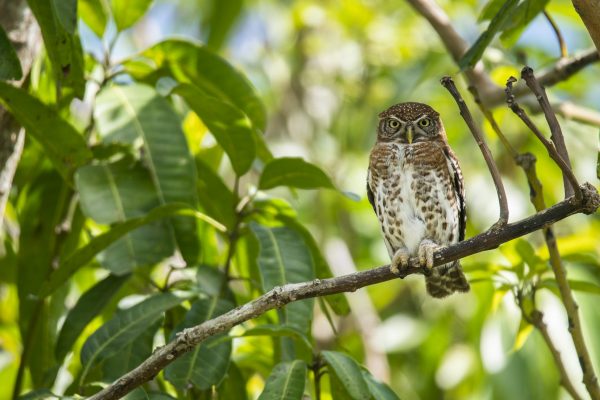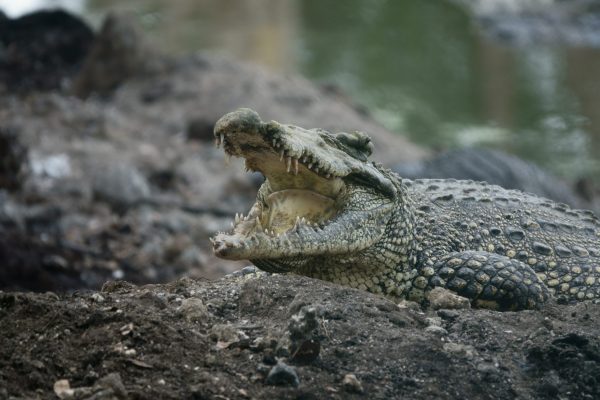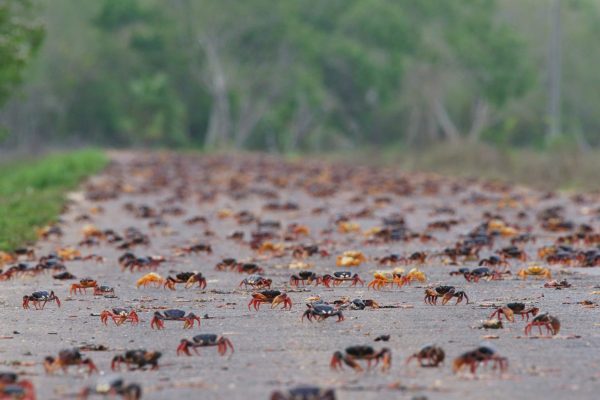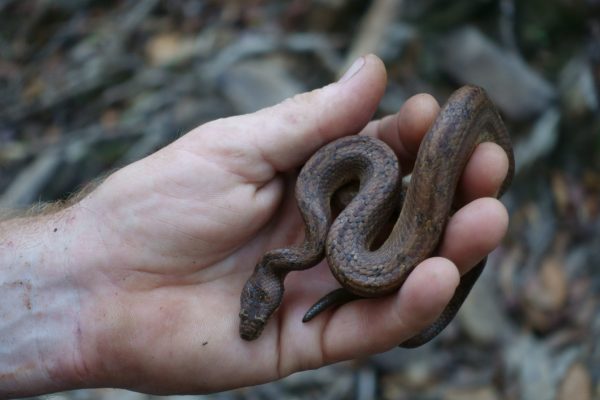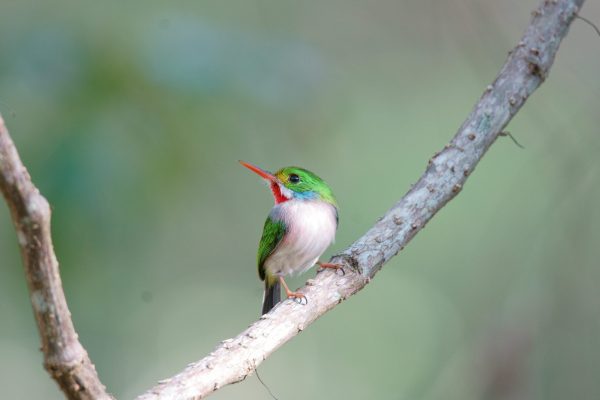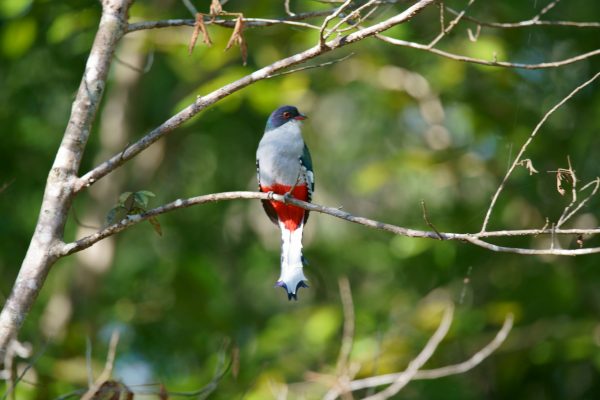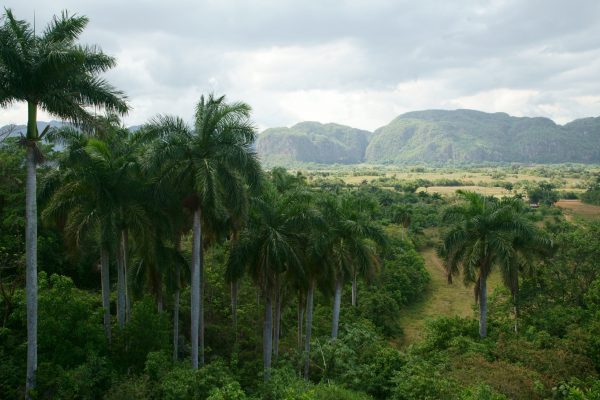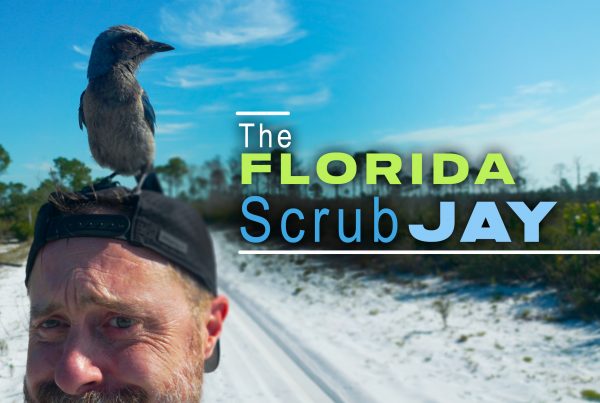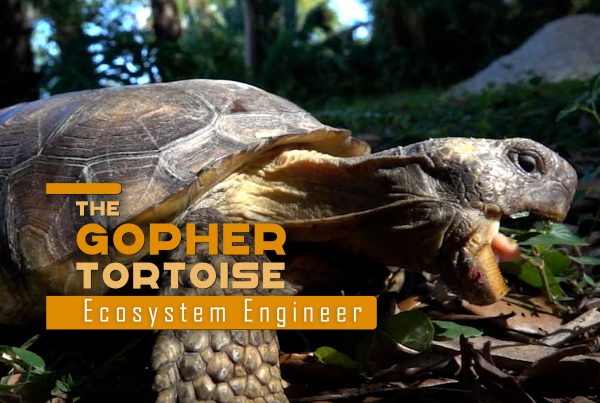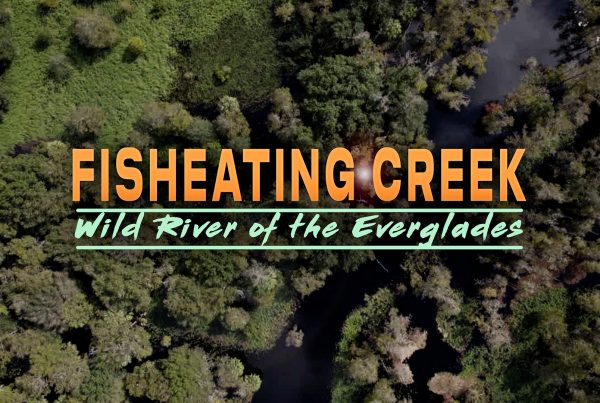Currents from Cuba takes audiences on a journey from the depths of Florida’s Fakahatchee Strand to some of the wildest areas on the island of Cuba.
“Just across the straits of Florida, stretches the longest island in the Caribbean. Cuba: a world of contradictions. Here we see evidence of a landscape that has been shaped by both isolation, and extraordinary connection with the outside world.”
Currents from Cuba takes audiences on a journey from the depths of Florida’s Fakahatchee Strand to some of the wildest areas on the island of Cuba. We explore some of the many things that make Cuba completely unique, as well as various ways that Cuba is connected, in ecological terms, to South Florida and the broader region.
Introduction by Ron Magill
I grew up in South Florida, falling in love with its subtropical climate and biodiverse habitats that in many ways, echo those of my fatherland. My father left Cuba in the 1950’s for the freedom and opportunity America offers, a story shared by millions today. Millions more, however, have not been as fortunate. We hope and pray for deep, lasting change for the people of Cuba. It is an island with a troubled history, but as you’ll see in this film, areas of incredible natural beauty remain, and species found nowhere else in the world persist. For me, this is a source of pride, and a source of hope. A hope that one day soon we will see a Cuba as free as a tocororo in flight, as prosperous and vibrant as “Jardines de la Reina,” the “Gardens of the Queen.” Thank you and enjoy this presentation of “Currents from Cuba.”
Intro
Just across the Straits of Florida stretches the longest island in the Caribbean. Cuba: a world of contradictions. Here we find evidence of a landscape that has been shaped by isolation and extraordinary connection with the outside world.
Islands are defined by their isolation. Cuba is no exception. Though it almost touches the tip of Florida, this is a different realm. Here as many as half of all plants and one third of all vertebrates are endemic, existing naturally nowhere else.
Yet in many ways its vistas, its variety of life-forms, mirror those of South Florida. And while it supports an impressive array of unique plants and animals, Cuba is also connected to its neighbors by superhighways of ecological exchange.
Fakahatchee
This is where our story begins. Not in Cuba, but deep in the swamps of southwest Florida. The Fakahatchee Strand is the orchid capitol of America. Most here are rare, including Florida’s most famous, the ghost orchid. The ghost is also found in western Cuba.
Mike-“The Orchid family produces the lightest seeds in the entire plant kingdom. Something like 600,000 seeds is like one gram. So these guys are like dust in the wind. So they’re really good at what we call “wind mediated seed dispersal” or what we really mean to say is wind-blown. So when they land they have to land in just the right spot with just the right temp, humidity and sunlight and the right kind of fungus for that seed to be able to germinate and have the chance to become an adult.
Of our 48 native species of orchids found in the Fakahatchee, Cuba probably has about 40 of those, so the vast majority of those are found in Cuba. I think we got a lot of these tropical epiphytic orchids maybe even from Cuba, hop-skipping on hurricanes or tropical storms, or possibly even getting stuck in bird feathers as they migrate back North from the tropics.”
In human terms, tropical orchids grow in some of the most inhospitable habitats imaginable. The fact is that most orchids are delicate and have very specific environmental requirements in order to thrive. Recent history has not been kind to Florida’s orchids.
Dennis- “The first impact was logging, and especially the era of industrial logging, when Fak for example was clear-cut. And then the era of collection, was kind of like the final nail in the coffin for some of the species. In Fakahatchee there were two species of epiphytic orchids that were documented that apparently went extinct or were extirpated, those same two species occur in Western Cuba, probably only 100 or so miles from Fakahatchee.”
Currents
The Florida Keys form the northern border of the straits that separate the U. S. from Cuba. The currents that sweep these shores carry more than just water. Marine debris.
Elliot Key is especially impacted by marine debris because of two things: One, we have 4 million people living in Miami-Dade County plus 12 million visitors every single year who are creating waste, which is ending up running through our storm drain systems and emptying into Biscayne Bay, but then secondly we also have the Gulfstream. The Gulfstream runs right by the Caribbean so we get a lot from Cuba, the Dominican Republic, Haiti…all washing on shore, but then that current connects to currents all over the planet.
80 percent of marine debris actually comes from land, and that’s because all of our water systems, no matter where you are, are interconnected. So for example: you throw a water bottle on the street in Ohio. It rains, it ends up in the storm drain system in Ohio, washes into the Ohio River, flows down, enters into the Mississippi River, and then boom, you’re in the Gulf of Mexico.
It’s really important that we get everyday people into the field to help with these clean-ups because they’re learning when they go on them. They learn about the whole life cycle of these plastics, they learn about the marine debris issue, and then they can go back to their network of people and start incorporating sustainable policies into their workplace, into their home lives, and start spreading information to their friends.
The proliferation of marine debris illustrates how connected the world’s marine environments are. While these currents have been hijacked, so to speak, by man-made waste, they have been critical superhighways for the movement of marine life since the straits were formed.
Fernando (vid 1, 2:43) Well you take any look at the ocean, you look at the water, it flows, it moves. And so do the organisms that live in there, so whether they’re passive migrators like larvae, that just go with the flow, or active migrators like sea turtles, they’re looking for a place to live. They’re looking for food, they’re looking for mates, and so they don’t care, there’s no sign, billboard in the middle of the gulfstream that says, “you’re now in the Bahamas, you’re now in Florida,” They’re going to where they need to go.
Havana
An ocean separates Miami from Cuba, yet a commercial flight is shorter than a telenovela. So close, ages apart. Founded by the Spanish in the 16th Century, Havana is one of the oldest cities in the Americas. Today its crumbling buildings reveal a passing of time quickened by conflict and climate, exaggerated by poverty and neglect. Still, the people persist and the culture is vibrant. Havana is a portrait of a country whose future wrestles with its past. This convergence of the old and new is seen throughout the streets, from La Habana Vieja, to Vedado to the Malecon: the famous seawall that winds along the northern coast of Havana.
Vinales and Soroa
A short drive west and Havana’s bustling city gives way to a rural countryside dominated by agriculture. Crops cover a large percentage of the terrain, dissected by irrigation ditches and ponds. With its subtropical climate, fertile soil and despite importing as much as 80 percent of its food, agriculture is one of the main industries in Cuba. Here and there, however, remnants of the natural landscape peek through.
Vinales in Pinar del Rio, the westernmost province, is famous for two things: its tobacco, and its “mogotes.” Cuba’s finest tobacco is cultivated in the red, iron-rich soil of this fertile valley.
Vinales is dotted with “mogotes” that rise from the earth like islands within an island. The landscape is stunning, an irresistible draw for nature lovers and photographers.
Paul: “So what’s really cool in Vinales is they’ve got these mogotes, which are pretty much these limestone hills that just come up really abruptly, maybe 1000 feet tall, and it’s this valley floor and then they just jut right out. Apparently it was a massive cave system and they were the columns of this big cavern and then it collapsed and that’s what’s the valley now that they farm on.
From a distance you can get some elevation from surrounding hills and then look down on this valley and then see these mogotes coming back up, so it’s a really dramatic look, especially coming from flat Florida.
So another thing that was interesting in Vinales is there is agriculture right to the edge of the mogotes. You know, tobacco, yucca, malanga…I’m used to photographing just pure, natural landscapes in Florida, I try to avoid hand-of-man, but I knew what I was getting into and I just kind of accepted it because that’s the story now.”
The contours of the mogotes appear smooth from afar, but a closer look reveals a jagged surface of “diente de perro” or “tooth of the dog” limestone. Clinging to the limestone is a diverse community of tropical dry forest plants that have adapted to the rocky terrain. Most are endemic. The native trees in turn are draped with epiphytes like bromeliads and orchids. Mule ear orchids thrive in this area. Once common in the southern Everglades, over-collecting and parasitism by a species of fly has decimated the Florida population.
These mountains offer shelter to many of Cuba’s endemic animals. Some mogotes are home to species of snails whose patterns have evolved to be unique to that particular mogote. You might say that the mogote, an island of sorts, is symbolic of Cuba as a whole. Geographical isolation prevents many species of plants and animals from spreading. This results in a genetic pool that is confined, basically an evolutionary “petri dish.” This is why islands like Madagascar, the Galapagos, and Cuba are famous for their high percentages of endemic species.
Cuba is particularly rich in its diversity of endemic amphibians and reptiles. Scouring a dry river bed, Paul and biologist Mark Parry encounter several of these unique species, such as the Cuban giant toad.
More than a dozen species of snakes from the genus “Tropidophis,” also referred to as “dwarf boas” are found here. The Cuban giant dwarf boa, one of the largest, rarely surpasses 3 feet in length.
Exploring life atop the mogotes is only scratching the surface. Below is a vast, hidden world. Over eons of time, chemical and physical erosion has not only pitted the limestone facades, but has channeled through, hollowing out a Swiss-cheese network of caves. The Santo Tomas cave system is believed to be the second largest in Latin America, tunneling for more than 25 miles through the guts of the mountains.
It’s a steep climb up the mountain and then down to the cave entrance. After gearing up the grueling decent begins. Cueva de Santo Tomas contains 8 levels of passageways. Accessing the many caverns is treacherous work. Explorers need to be mindful of steep drop-offs, delicate formations and muddy, claustrophobic spaces.
We spent several hours exploring the system, equipped with powerful flood lights necessary to illuminate the space with its magnificent formations. These pillars, stalactites and stalagmites have been sculpted by millions of years of dripping, mineral rich water. Natural light never reaches most of the interior, but by having us “paint” the structures of the cave with artificial light Paul is able to capture scenes of primeval beauty.
Though most of Cueva de Santo Tomas is devoid of light, there is life here. Cave crickets and tailless whip scorpions are food sources for other unlikely inhabitants. This big-eyed cave-dwelling frog is known for reproducing through a process called direct development. Eggs are laid in moist sand, incubating tiny “froglets” which emerge upon hatching. There is no tadpole stage. Eleutherodactylus Zeus, a critically endangered species, is found in only a few caves in Western Cuba.
There are no towering mountains on Cuba’s remote Guanahacabibes Peninsula. But as in Vinales, the bedrock is perforated with caves which are filled with hundreds of roosting bats. Cuba is home to more than 2 dozen bat species, representing about 75 percent of the island’s mammal diversity. The Cuban boa is a bat-hunting specialist, and the longest snake in the Caribbean. Eleutherodactylus guanahacabibes, one of Cuba’s smallest frogs, is only found in the caves of Guanahacabibes.
Discarded conch shells, remnants of past meals, are evidence that humans also found shelter here. Centuries ago, the indigenous Guanahatabey tribe decorated the cave walls with pictographs, such as this previously undocumented portrayal of a pregnant woman.
Guanahacabibes is as rugged as it is remote, with a history as wild as the landscape. But for many, the heart of Cuba’s untamed wilderness beats in the Zapata Peninsula. It’s on this large spur of land that we find Cienega de Zapata: the largest wetland in the Caribbean, often called Cuba’s Everglades.
Zapata
The Rio Hatiguanico winds through the northern portion of the Zapata peninsula, filling its swamps with fresh water and enriching the surrounding coastal estuaries. A journey down the river takes us through a primeval landscape. Flanked by sawgrass prairies, towering palm hammocks, and tunneling through ancient, looping red mangrove trees, the Hatiguanico is Cuba’s wildest river. Sharp eyes might spot rare endemic species, like Cuban sliders, arboreal hutias, and Cuban crocodiles. In some areas, the water seems to boil with rolling tarpon.
But Zapata Swamp faces many of the same threats that are challenging the Florida Everglades. Invasive fish and plants, like the melaleuca, are displacing the native species. Natural habitat is being lost to charcoal production and agriculture. Fresh water, the life blood of Zapata, is being diverted for irrigation, another huge issue plaguing the Everglades ecosystem.
Still, Zapata is relatively untouched. Matanzas province, which is home to Zapata Swamp, is the largest province in Cuba by land area, but the smallest by human population. Huge swaths of uninhabited wilderness and thriving wildlife can be found here, and it is a wonderful place for lizards.
More than 60 species of anolis lizards are endemic to Cuba, compared to Florida’s one. Male anoles pump their legs and flash their dewlaps in territorial displays and will defend their ground aggressively.
Curly tail lizards take advantage of a fallen termite nest, filling their bellies with the protein-rich insects.
The Cuban iguana, one of the largest lizards in the Caribbean, prefers a vegetarian diet. Spring is mating season, and today, hunger is not the only urge that needs satisfying.
Cuba’s most infamous reptile can be found almost exclusively in Cienega de Zapata. Approximately 2,500 of these notoriously aggressive Cuban crocodiles inhabit the swamps here. Procreation is key to their survival, and spring is mating season.
It’s a delicate affair, in reptilian terms at least. With luck, their courtship will add a new generation to a critically endangered population of Cuban crocodiles.
Birds of Cuba
Spring is also nesting season for many birds. 27 species are only found on this island, including the colorful, energetic “cartacuba,” or Cuban tody.
This Cuban green woodpecker had constructed a fine dwelling for its chicks, which accept steady deliveries of crickets. The Fernandina’s flicker prefers open savannahs. A dead sabal palm is the perfect tree to hammer out a nesting cavity. Woodpeckers are the carpenters of the bird world: “carpinteros,” to use their Cuban nickname. Once the chicks are fledged and the cavity abandoned, it is “recycled” by several other species of birds that rely on the carpintero’s skills for their own nesting. Cuban pygmy owls use the woodpecker’s holes to raise their own young, as do Cuban trogons, or “tocorroros.” Their distinctive calls are common throughout the country and they wear the colors of the Cuban flag, a fitting uniform for Cuba’s national bird. The tocorroro’s squat bill is useful for harvesting fruits and insects… not so much for chipping wood. The owl’s hooked beaks are also no good for hammering. These birds totally depend on the woodpeckers’ talents and nest recycling for their own procreation.
The Zapata sparrow is endemic to the Zapata Swamp system. In other words it is found nowhere else in Cuba, not to mention the world. The same is true of the Zapata wren. Though ordinary in appearance, this songbird, with its melodic call, is prized by birdwatchers. As few as 300 of these birds exist today.
The most famous bird in Cuba is incredibly tiny. The bee hummingbird is in fact the smallest bird in the world. The female is slightly larger, though it still weighs less than a penny. Males sport magnificent plumage, punctuated by an iridescent red throat and head. These feisty “zun-zuncitos” are a challenge to film, seemingly never at rest, and constantly guzzling sugar-rich nectar. But if you’re lucky enough to find its tiny nest, you can observe a female at her most sedentary. But even when sitting, she doesn’t like to sit still! The female is in charge of nest-building, using bits of cobwebs and lichen. When the nest is complete, and eggs are laid, she alone will incubate them.
The Cuban emerald hummingbird, or “zun-zun” is found in Cuba and the western Bahamas. It’s also tiny, even at nearly twice the size of the bee hummingbird. The emerald, like the bee, is impossibly fast, but high-speed cameras give us the opportunity to appreciate their amazing agility.
Female emeralds are fiercely protective of their vulnerable nests. A Cuban giant anole has found this out the hard way, after venturing too close for the mother’s comfort. Reluctantly, the anole moves along, finding refuge in the shelter of the tree canopy.
Bonefish
On the edge of the Zapata Peninsula, the flats of Las Salinas are havens for wading birds. Caribbean flamingoes feed here throughout the year but during the winter months, there may be tens of thousands. Those more familiar with the Everglades know that it’s a lucky day to catch a glimpse of 3 or 4 in Florida Bay.
Peppered with small mangrove islands, the shallow, sandy-bottomed estuaries of Las Salinas are also critical habitats for several species of fish. In Las Salinas, the bonefish is king.
While the fishing in Las Salinas is spectacular, bonefish numbers in Florida Bay have been in decline for many years. Several factors may be contributing to this, but one thing is clear: conditions in Florida Bay have been deteriorating since the late 1980’s.
Ross (46:44) For bonefish populations to be thriving, there has to be a lot of elements to the ecosystem that has to be thriving too. They need good water quality so they can have the appropriate air to breathe, they also need the right amount of food and the right amount of shelter from predators. And if any of those things get disrupted, than the bonefish populations will go down.
In South Florida, bonefish are an incredibly valuable recreational fishery and biologists are beginning to look at Cuba for answers to some of their questions.
Jen (vid 3, 27:03) We were super privileged to spend an entire day with two excellent fishing guides when we were in Cuba and one of the things that was striking was how they managed their fishery and the zonation that they have across the different guiding areas and how they do this in a way that protects the fishery. The guides keep track of these zones, the zones are not fished consecutively and areas get a rest once they’ve been fished one or two days.
For biologists, Las Salinas may prove to be an important reference point; an example of an estuarine habitat that is functioning near its full potential. By comparing the hydrology and resource management strategies of this area to those of Florida Bay, scientists may better understand what needs to be done to bring bonefish back from the brink.
Las Salinas spills its brackish contents into Bahia de Cochinos: The infamous Bay of Pigs. Anchored to the seafloor are patches of thriving corals. These submerged islands bustle with life…veritable cities of reef fish, sponges and sea fans. Healthy colonies of elkhorn coral provide shelter for fish and a buffering structure to subdue the pounding of the surf.
The currents sweeping the Cuban coast transport many species of marine life. Unlike marine debris, larval animals have the ability to control their tiny bodies, to steer with or against the currents. Baby fish, crabs, and other marine animals born in Cuban waters will harness those currents, adding new life to the waters of Florida, the Caribbean and beyond. In ecological terms, what happens in Cuba, has much broader implications.
Jardines
The patch reefs that dot the Bay of Pigs are exceptionally vibrant but dozens of miles off of Cuba’s southern coast, rests “Jardines de la Reina,” the “Gardens of the Queen.” This isolated archipelago is one of Cuba’s largest protected areas.
The islands, lush with mangroves and palm trees, shelter endemic birds and lizards, like Cuban iguanas. A species of hutia can also be found here. Aside from rain and dew, there is no fresh water on these islands and this rodent has adapted to survive with little. Not surprisingly, a tourist’s bottle of spring water is a welcome treat.
The real gardens grow below the water’s surface. In the clear shallows, turtle grass carpets the seafloor. The American crocodile stalks these meadows and mangroves. In the coastal estuaries of Zapata, this more widespread species shares overlapping habitat with its cousin, the Cuban crocodile but here the American croc has no competition. With plenty of food, and sandy beaches for nesting, this truly is crocodile paradise.
Farther out to sea we find the colorful gardens of corals for which this area was named. The landscape bristles with soft corals that dance in the currents. Hard corals are the all-important reef builders and a stunning variety of species grow here. Again, we find elkhorn coral, a species once common in Florida waters. Blighted by coral bleaching and battered by storms and careless divers, it is now incredibly rare. In Jardines de la Reina, it thrives.
As remarkable as the number of healthy corals, are the healthy schools of sharks. This should not be a surprise. Sharks can be an indicator of the overall health of a coral reef ecosystem.
Andres: “Having so many sharks is because of the richness here. It’s because of having all of the trophic chain intact. You have all the groupers, all the snappers. If you go into other places of the Caribbean, then you have missing parts of the chain.”
Fernando: “So sharks are keystone species, similar to a lion in Africa. When you see a lion on a savannah in Africa, it’s a good sign. When you see sharks on the reef, be happy because what they are doing is they are top down controllers, keeping everything in check.”
Certain species of reef fish, like parrotfish, are important but not in large numbers. Parrotfish graze on algae that can smother the bare coral, which is a good thing. Occasionally, however, they nip off living coral polyps. Without large predators like sharks and groupers, parrotfish can overpopulate, putting too much pressure on the living coral. It takes a large population of sharks to maintain this balance.
Plenty of sharks means exciting scuba diving, another reason Jardines de la Reina is one of the world’s premier diving destinations. Caribbean reef sharks are curious and seem to be everywhere, but box of chum brings them in like a dinner bell.
These predators may prove to be the best line of defense against the Lionfish: an infamous invader with a huge appetite. This invasive Pacific species has spread from South Florida where it was first introduced, and their larvae were eventually transported throughout the Caribbean where they are now an ecological disaster. On these reefs, the sharks and groupers are learning to gobble them up, even despite their venomous spines.
Jardines de la Reina is remote, and the number of visitors is strictly regulated. The result is a system where human impact is at a minimum. Compared with tourism hot-spots like the Florida Keys, whose reefs are constantly battered and whose fisheries face enormous pressure year after year, the Gardens of the Queen are flourishing.
Coral reefs around the world are in precipitous decline, and scientists have been exploring broader approaches to marine conservation. After all, the world’s oceans are connected, and only 250 miles separates the Guanahacabibes Peninsula from the Florida Keys.
FB- “So the Sister Sanctuary agreement was announced in November 2015, And the first agreement reached between two countries after 5 decades was an environmental one.”
Through the Sisters Sanctuary agreement, The Florida Keys and Flower Garden Banks National Marine Sanctuaries, along with Banco San Antonio and Guanahacabibes National Park in Cuba are able to more easily engage in critical scientific and conservation collaboration.
Ecological exchange is not limited to the marine world, and elsewhere, collaborative conservation efforts are being cultivated. In the rainforests of Cuba’s Sierra de Rosario mountains lies the Orquideario de Soroa, a lush botanical garden famous for housing the largest collection of native orchids in Cuba. The collection contains varieties common to Cuba and South Florida, including two species believed to be regionally extinct in the Fakahatchee Strand.
Bulbopylum pachyrachus is the Rat-tailed orchid and it gets that name because its flower spike kinda looks like a rat tail, like little flowers along a rat tail. Epidendrum accunae is a hanging orchid and it has a really unique growth pattern. There’s like a main leaf that grows and then other little side leaves grow off of it and then flowers are born off of those side leaves.
In 2012, Dennis Giardina and Mike Owen traveled to Cuba where they discovered that these two lost orchids were being grown in the Orquideario de Soroa. This revelation planted a seed in Dennis’ mind. Maybe they could reintroduce these plants to the Fakahatchee, using seeds from healthy Cuban populations.
The main barrier has been the length of time it’s taken to get permission from the Cuban govt to collect seeds from these species in the wild and then export them to Florida.
The many hurdles are daunting, but Dennis is hopeful. With the help of their friends in Soroa, perhaps, one day, these lost orchids will bloom again in the swamps of the Fakahatchee.
In the meantime, the natural world marches on.
In Zapata, land crabs make their homes in the forest, burrowing down to the water table to keep their gills moist, and emerging for periods of time to scavenge. Though their borrows can be found as far as 6 miles inland, these crabs rely on the ocean’s currents to disperse their fertilized eggs. This means that they must march to the sea to release them. And they do this by the tens of thousands. The epic migrations, usually triggered by the first rains of spring, carpet the forests and roads along the coast.
It is a perilous journey, and for thousands, crossing the winding coastal highway is a deadly pilgrimage.
Me: “All along the side of this road here in Playa Larga in the Peninsula de Zapata is a mound of what, from afar, looks like sand. But when you bend down and look at it, it’s actually the skeletal remains of hundreds of thousands of land crabs that have met their end right here on the street.”
But here, nothing is wasted and some that are sacrificed, become opportunities for the living. Even other land crabs help to dispose of the mess.
Those that are spared make their way carefully across the jagged, weathered coast and dip their bodies into the ocean. Here they will have the opportunity to release their eggs into the sea, whose currents may carry a new generation to faraway shores.

